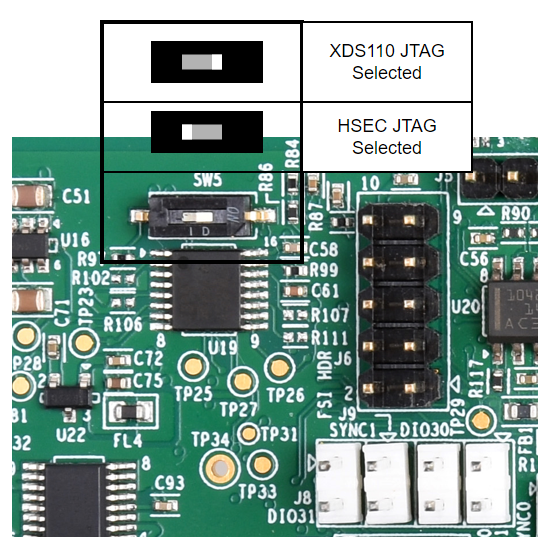SPRUJ09D March 2022 – September 2023 AM2631 , AM2631-Q1 , AM2632 , AM2632-Q1 , AM2634 , AM2634-Q1
- 1
- Abstract
- Trademarks
- 1Preface: Read This First
- 2Control Card Overview
- 3Board Setup
- 4Hardware Description
- 5References
- Revision History
- A E2 Design Changes
- B E1 HSEC Pinout Table
4.13 JTAG
The AM263x Control Card includes an XDS110 class on-board emulator. The control card also has the option to map the JTAG signals from the AM263x SoC to the HSEC connector.
 Figure 4-21 JTAG
Figure 4-21 JTAGA DIP switch is used to drive the select line of a 1:2 mux (SN74CB3Q3257PWR) that determines the pathing of the AM263x SoC JTAG signals.
 Figure 4-22 JTAG Path Switch
Figure 4-22 JTAG Path SwitchThe Control Card includes all circuitry needed for XDS110 emulation. The emulator uses a USB 2.0 micro-B connector to interface the USB 2.0 signals that are created from the UART-USB bridge. The VBUS power from the connector is used to power the emulation circuit so that the connection to the emulator is not lost when power to the Control Card is removed.
The XDS110 controls two power status LED's. For more information refer to Power Status LED's.